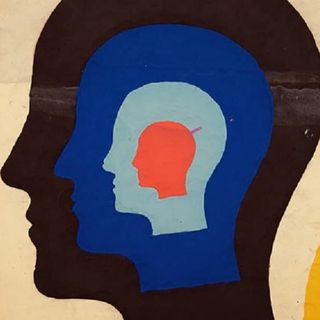In his third major book on evolutionary theory, The Expression of the Emotions in Man and Animals (1872), Charles Darwin declared that emotional tears are “purposeless.” Which is kind of short-sighted, right? Humans are the only species who produce tears as an emotional response to stimuli. Over the years, researchers have discovered that we actually have different types of tears — tears from crying over a break-up versus from crying while cutting an onion look very different under a microscope. And while there’s still a lot to be discovered about the physiological implications of why we cry, tears and their function are integral to our most fundamental human experiences.
The human body produces three types of tears: basal, reflexive, and psychic. All of these are secreted by the lacrimal gland, located just above the eye. The lacrimal system receives messages from both the autonomic nervous system and the frontal lobe of the brain, triggering the production of tears. Basal tears are constantly secreted, used to protect and lubricate the cornea. Reflex tears only occur when an irritant like dust or dirt (or chopping onions) causes a response to flush it out.
But psychic tears are the trickier ones. They’re the ones that are produced as a result of strong emotional responses such as stress, joy, anger, sadness, and of course, physical pain. It’s these tears that are produced with projections from the frontal lobe. Studies have shown that the same neuronal areas of the brain are activated when we see someone cry as when we cry ourselves, causing scientists to believe that humans have evolved to a point where crying automatically triggers empathy and compassion in other people.
Related on The Swaddle:
While all tears contain a mixture of lipids, metabolites, electrolytes, and enzymes, the actual composition of tears vary, depending on what caused them. Psychic tears contain additional proteins and hormones that are absent from other kinds of tears. Leucine enkephalin, a natural painkiller released when the body is under stress, is found in psychic tears, helping to regulate the body back to homeostasis. It’s also why people might feel better after crying.
However, because structures seen through a microscope crystalize differently, depending on the conditions and evaporation rate, even two psychic tears with the same chemical composition might look vastly different. This poses a problem for scientists and researchers, but Rose-Lynn Fisher, a photographer, uses it to her advantage. Her project, Topography of Tears, started in 2008 when she began collecting tears triggered by different stimuli on glass slides.
The results, magnified 10 times, look like aerial views of landscapes, shorelines, snowflakes, and are titled based on what she was feeling as she cried — “tears of change,” “tears of endings and beginnings,” and “tears of elation” as well as basal and reflexive tears. Unlike Darwin, Fisher believes that tears are integral to the human condition. “Tears are the medium of our most primal language in moments as unrelenting as death, as basic as hunger and as complex as a rite of passage,” she says. “It’s as though each one of our tears carries a microcosm of the collective human experience, like one drop of an ocean.”




